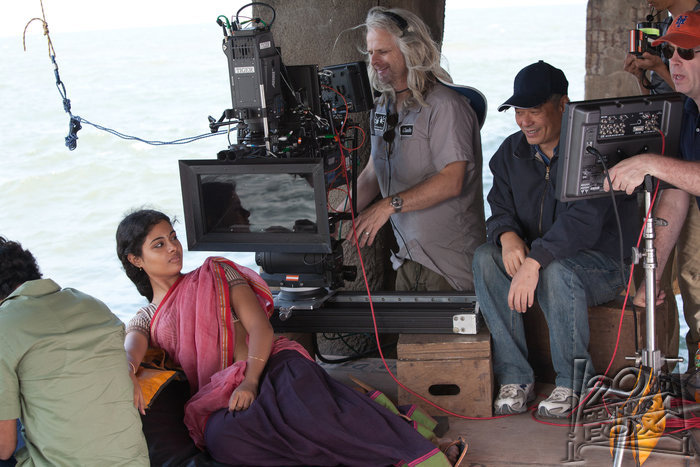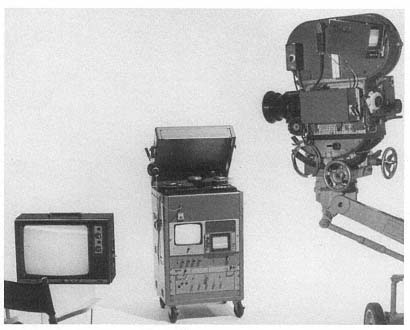Alexa SXT goes wireless. Its… Alexa SXT-W .
Basically the monitor output has gone wireless.
No more cumbersome , time taking process of connecting the monitor through a physical cord or wire.
The director can be given a handy portable monitor , with which he can , monitor the shot or frame, from wherever he is on the set. No messy cables to connect to. He is free to move. The wirefree monitor out is so convenient.
Though this feature was available , since few years , in cameras like GoPro and the Drone Cameras , the fact that this feature has made it to the high end , image capturing workhorses like Alexa , underlines the great convenience of this feature.
This set me into thinking about the time , when there was no monitor or video assist available on the set. The director has to totally rely on the cinematographer’s assurance, if a take was ok or not.
Immediately after the director says cut , the whole set would look , unabatedly towards the Cinematographer, for him to pronounce that the take was ok.
Just thinkhow much responsibility was there on the cinematographer then. So, does the presence of a monitor in a set , have robbed of some of that central responsibility from the cinematographer. It’s a Definite Yes.
But then the medium has changed a lot too. With the advent of computer graphics , being integral to so many films, it becomes imperative for the frame to be seen by not just the director , also by the special effects supervisor too. Lot of times , even for the art director, it helps , to fine tune the placement of set props.
 No one can doubt or question the central place a monitor holds in a typical shoot set today. Its so vital and intrinsic .
No one can doubt or question the central place a monitor holds in a typical shoot set today. Its so vital and intrinsic .
Personally , I feel , monitoring a shot through the monitor is primarily , a director’s personal space. Its uptohim , to share this space , with anyone who can contribute more to that particular shot. The director uses the monitor to smooth action cues , entries , crosses etc; And also to see the effect of panning or tracking.
There have been instances with some actors , when they couldn’t deliver the performance as required by the director, will get lot of clarity and perform well , after being shown the playback in a monitor.
Like all the tools , video assist , could be over used or misused.So its better , it remains as a personal, helping tool for the director alone.
It’s a pity that some actors , take it for granted that viewing a monitor once the shot is over , as their right. Without realising that they are stepping into the director’s personal space. And that sometimes it could ruin their performance rhythm too.
Jerry Lewis , was one of the first , to have used Video Assist .For his film Bellboy ( 1960 ), which he wrote , directed ,produced and acted too. It was the first film he had to direct and act. So , he wanted to see what he was doing infront of the camera , after the shot was over. So he devised the video assist , with help from Paramount’s technical team and Sony’s Morita Junior.

It was basically , a separate video capturing device , mounted just above the optical viewfinder of the BNC Mitchell camera.Its a closed circuit industrial type RCA Vidiconcamera , fitted with a variable focal length zoom lens .
The video assist helped him tremendously and hence it became a permanent feature , in all his future productions.
Director Blake Edwards was the first to use the beam-splitter single-camera system invented by engineer Jim Songer in the 1968 film The Party.
The first generation of mainstream video assists were – a kind of add-on to the side door of the film cameras. They will drastically reduce the amount of light , coming to the optical viewfinder. Arri III with a custom made add on video assist door is one such example.
Then came the cameras , like Arri 435 , in which the video assist was integral to the design ( IVS ) and hence there was absolutely no loss of light in the optical viewfinder path.
Ofcourse with the onslaught of the digital cameras, montiors became ubiquitous , sometimes as the natural and only way of even operating the camera , with a small on board monitor on the camera .
There were certain cinematographers of yester years, who havewalked out ofcertain feature film sets, because they were asked to shoot with a video assist.
They felt , it took the trust off them. At that time , may be they were right in doing so.
But now, one can’t even think about , shooting without a monitor in a set.So much so , that in some industries , even going for a rehersal is called as : okay … lets go for a monitor.

